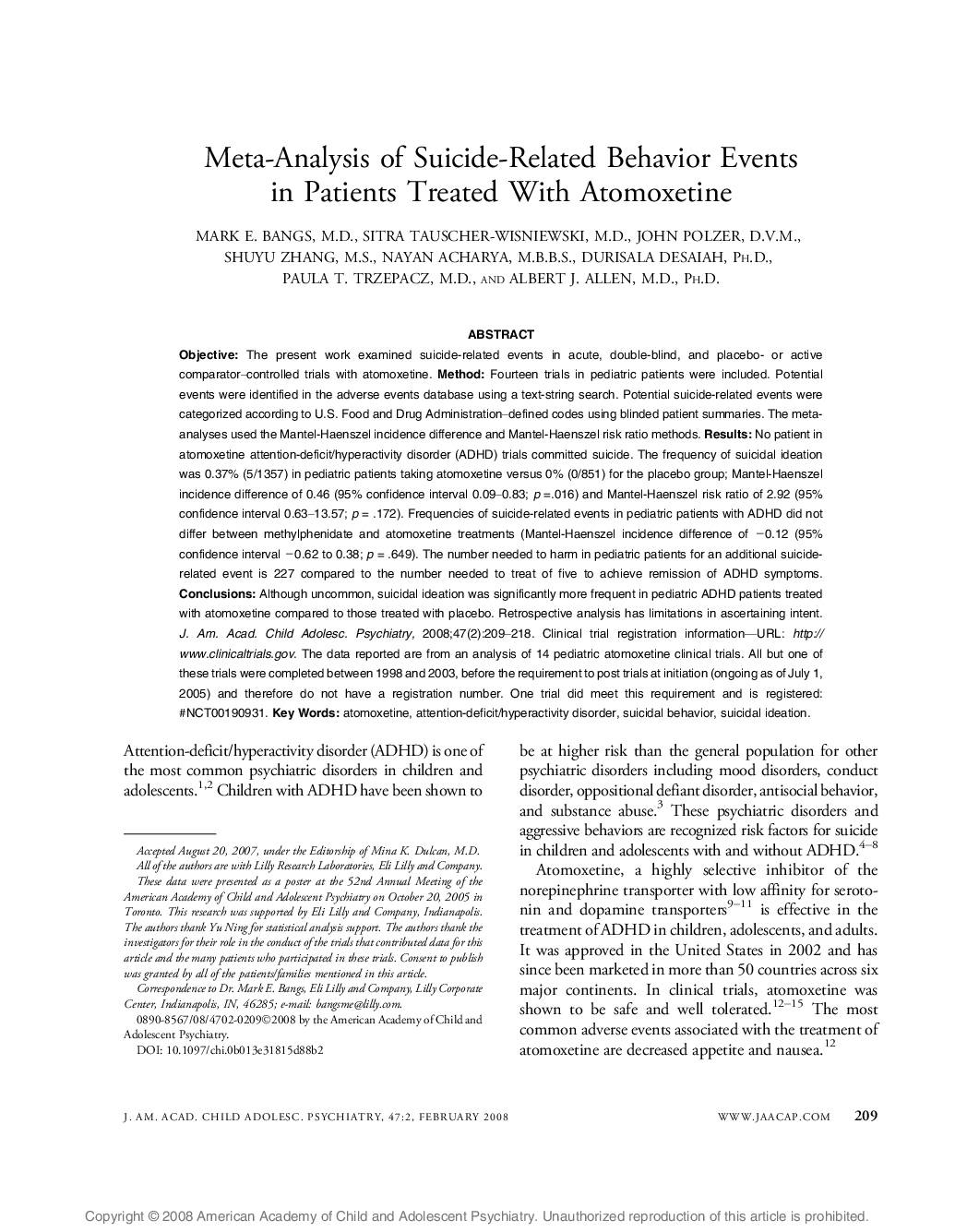| Article ID | Journal | Published Year | Pages | File Type |
|---|---|---|---|---|
| 324955 | Journal of the American Academy of Child & Adolescent Psychiatry | 2008 | 10 Pages |
ABSTRACTObjective:The present work examined suicide-related events in acute, double-blind, and placebo- or active comparator-controlled trials with atomoxetine.Method:Fourteen trials in pediatric patients were included. Potential events were identified in the adverse events database using a text-string search. Potential suicide-related events were categorized according to U.S. Food and Drug Administration-defined codes using blinded patient summaries. The meta-analyses used the Mantel-Haenszel incidence difference and Mantel-Haenszel risk ratio methods.Results:No patient in atomoxetine attention-deficit/hyperactivity disorder (ADHD) trials committed suicide. The frequency of suicidal ideation was 0.37% (5/1357) in pediatric patients taking atomoxetine versus 0% (0/851) for the placebo group; Mantel-Haenszel incidence difference of 0.46 (95% confidence interval 0.09-0.83; p =.016) and Mantel-Haenszel risk ratio of 2.92 (95% confidence interval 0.63-13.57; p =.172). Frequencies of suicide-related events in pediatric patients with ADHD did not differ between methylphenidate and atomoxetine treatments (Mantel-Haenszel incidence difference of −0.12 (95% confidence interval −0.62 to 0.38; p =.649). The number needed to harm in pediatric patients for an additional suicide-related event is 227 compared to the number needed to treat of five to achieve remission of ADHD symptoms.Conclusions:Although uncommon, suicidal ideation was significantly more frequent in pediatric ADHD patients treated with atomoxetine compared to those treated with placebo. Retrospective analysis has limitations in ascertaining intent.
